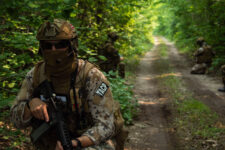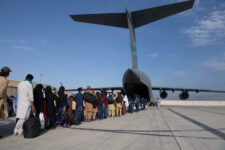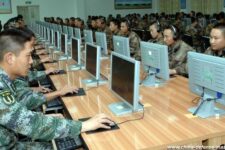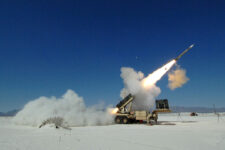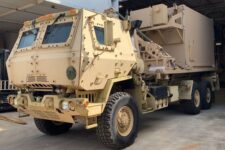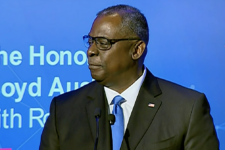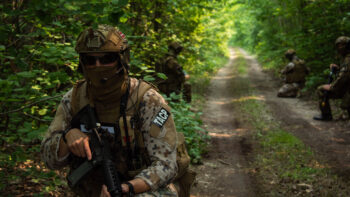Americans are understandably weary of our nation’s longest war. But even when the last troops come home from Afghanistan – which they won’t for at least three years – their battles won’t be over, and they’ll still need our support. Just as there are almost three million World War II veterans still alive today, we will be dealing with veterans of Afghanistan and Iraq well into the 2080s.
Some of our most horribly injured veterans will need help for the rest of their lives just getting through the day. Hundreds of thousands more will need treatment for what one landmark study called the “invisible wounds” of depression, post-traumatic stress disorder, and brain damage from the concussion of roadside bombs. Simply spending months in a war zone has strained the body, mind, and relationships of every one of the more than two million men and women deployed since 9/11. And it doesn’t stop with them: Because today’s military is mostly married, with almost as many dependents as troops, the effects of this war will echo not just through the lifetimes of those who fought it but through the lifetimes of their children.
“My younger daughter, Hannah, has very bad attachment issues,” said one soldier who spoke to me about the impact of his two deployments on his family. “It’s just gotten to the point now where my wife can leave Hannah with me and she’s not in a crying jag at the door.” His older daughter, meanwhile, has gotten so used to living without him that “occasionally I feel like an alien in my own house,” he said. I’ve interviewed more than 200 veterans of Afghanistan and Iraq, and such stories are sadly common.
All that’s the bad news.
The good news is that our veterans are not victims. They are fighters, by definition. If we give them the support they need, they will repay our investment many times over as productive workers in the civilian economy or experienced leaders in the post-war military.
Even injuries that would once have been called crippling are no longer a barrier to a civilian career or even to continued military service. Just ask Leroy Petry, the Army Ranger who received the Medal of Honor this July for grabbing an enemy grenade and throwing it away from his comrades, an act which cost him his right hand. “I thought, ‘I’m going to have a hook,'” Petry told reporters after his medal ceremony. Instead, he’s back on active duty, albeit not in a frontline combat job, with an advanced prosthetic hand. Such high-tech prosthetics are expensive, especially for entire lost limbs: A top-of-the-line computerized “C-Leg” can cost $40,000, or about $8,000 a year over its manufacturer-guaranteed lifetime. But that’s a small cost to retain a service member with years of expensive training – or to return that veteran to the civilian world with a higher chance of getting a good job.
For every amputee like Leroy Petry, there are literally thousands of combat veterans who have been hurt in less obvious ways. These invisible injuries range from bad backs – try walking around with a hundred pounds of body armor and ammunition for a year – to post-traumatic stress disorder to broken marriages. Like Petry with his prosthetic, many of these veterans can return to normal functioning if they just get proper treatment.
PTSD, for example, never just goes away. But there are plenty of proven therapies, many not involving drugs, that reliably reduce PTSD symptoms so that traumatized vets can sleep through the night, reconnect with their loved ones and get on with their lives.
“I’m always going to have those thoughts,” said Matthew Wiese, an Air Force medic who treated Afghan children mortally wounded by a bomb. “They’re always going to be there; but do I have nightmares and wake up in cold sweats? No.” Wiese came home from Afghanistan and sought therapy, he said, because “I don’t want to have nightmares and mental issues and everything else throughout my life and have it eventually affect my family and my daughter.”
At least one study shows having a parent with post-traumatic stress disorder predisposes a child to PTSD. But counseling is still in short supply, both for those still in the military and for veterans in the civilian world. Many therapists now donate their time to vets, for example through a non-profit called “Give An Hour.” Therapy is expensive, easily $100 to $200 an hour (counting both the patient’s and insurance’s share), which means a typical 12-session of “exposure therapy” to get symptoms under control can cost $2,500, while a full year of weekly sessions can cost over $10,000 – comparable to the annual cost of a high-end artificial leg. But even more than with a physical prosthetic, the cost of treating PTSD needs to be offset against the economic costs of not treating it, from lost productivity to outright unemployability to suicide.
Two Million to Care For
What veterans need varies widely, from psychotherapy to prosthetics, from marriage counseling to job training. All this costs money at a time when the country is choking on debt. But America has borne such burdens before, and indeed far heavier ones, because while more than two million men and women have deployed since 9/11, that’s still less than the three million who served in Vietnam, let alone the sixteen million in World War II. Much veterans’ Affairs healthcare spending is driven by diseases of aging, not battle wounds. And post-9/11 veterans aren’t coming in as fast as older veterans are dying off: VA data shows the total population of veterans has dropped every year since 2000 and will keep dropping for decades to come. If the smaller, poorer United States of the 1950s could take care of its 16 million veterans, surely we can do right by our two million.
The moral bottom line is that all our veterans deserve our support. The literal bottom line is that most of them will pay back our investment in time of peace, just as they have proven worthy of their hire in time of war.
It’s been a tough 10 years in the American military. Now we need to keep faith with our veterans in the decade to come.
Sydney J. Freedberg, Jr., is a regular contributor to Breaking Defense. He runs the website LearningFromVeterans. The views expressed are his own.
No service can fight on its own: JADC2 demands move from self-sufficiency to interdependency
Making all-domain operations a warfighting capability means integrating, fusing, and disseminating a sensor picture appropriate for a particular theater segment, not all of them, says the Mitchell Institute’s David Deptula.
